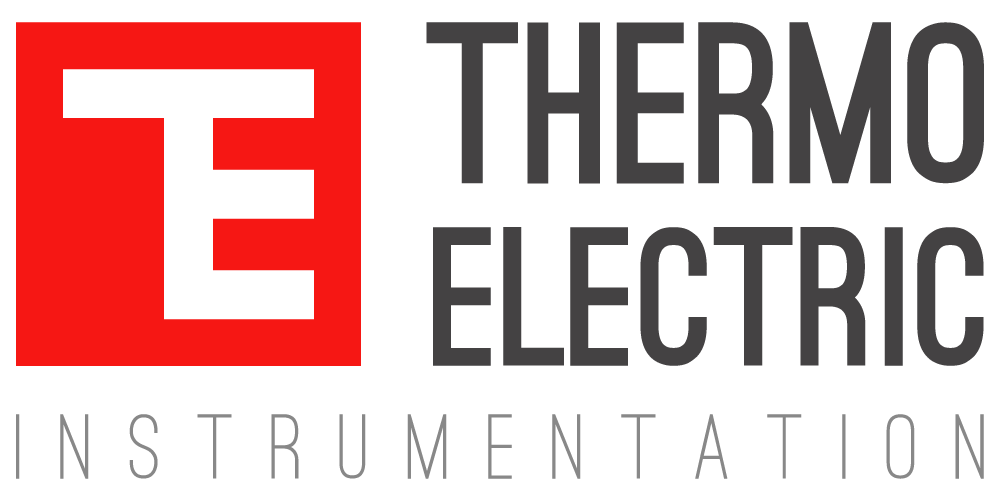A Guide to Thermocouples
Welcome to our Thermocouple FAQs section, a comprehensive guide designed to deepen your understanding of thermocouples. This resource offers detailed insights into the functionality, types, applications, and maintenance of thermocouples. Whether you’re a professional in the industry or simply curious about how these crucial temperature-measuring devices operate then this is for you.
Our FAQs below provide clear, concise information to enhance your knowledge. From exploring the basic principles of thermocouples to delving into their various types and applications in different industries, this guide is an invaluable resource for anyone interested in the science and practical use of these essential temperature sensors.
A thermocouple is a sensor that measures temperature by utilising the thermoelectric effect. It consists of two dissimilar metal wires that are connected at the ends, generating a voltage that is proportional to the temperature difference between the two ends. This voltage can be measured and used to determine the temperature at the measuring end.
Three important things to know about thermocouples are:
- They are commonly used in industrial applications due to their robustness and ability to withstand high temperatures and harsh environments.
- They can measure a wide range of temperatures, from cryogenic temperatures to several thousand degrees Celsius.
- Thermocouples can produce low output voltages, so they require signal amplification or conversion to be used in most applications.
A thermocouple works based on the Seebeck effect, which is the generation of a voltage when two dissimilar metals are connected and subjected to a temperature difference. In a thermocouple, the two dissimilar metals are connected at the measuring end and exposed to the temperature being measured. As the temperature changes, the voltage generated by the thermocouple changes proportionally. The voltage generated is typically very small, so a signal amplifier or converter is required to measure it accurately.
Three important things to know about how thermocouples work are:
- They rely on the thermoelectric effect to generate a voltage, which is proportional to the temperature difference between the two ends of the thermocouple.
- Thermocouples must be made from dissimilar metals to work, and the choice of metals affects the sensitivity, temperature range, and accuracy of the thermocouple.
- The voltage generated by a thermocouple is very small, typically only a few millivolts, so signal amplification or conversion is required to accurately measure the temperature.
There are many types of thermocouples available, each made from different combinations of metals and designed for specific temperature ranges and applications. The most commonly used types of thermocouples are Type J, Type K, Type T, Type E, Type N, and Type R/S.
Three important things to know about the types of thermocouples are:
- Each type of thermocouple is made from a specific combination of metals, which affects the temperature range and accuracy of the thermocouple.
- Thermocouples are designated by a letter, such as Type K, and a corresponding colour code, which makes it easy to identify the type of thermocouple being used.
- Choosing the right type of thermocouple depends on the specific application, such as the temperature range, accuracy requirements, and environment.
The accuracy of a thermocouple depends on several factors, including the type of thermocouple, the quality of the materials used, the measurement setup, and the calibration process. Generally, thermocouples have lower accuracy than other types of temperature sensors, such as resistance temperature detectors (RTDs) and thermistors.
Three important things to know about the accuracy of thermocouples are:
- The accuracy of a thermocouple depends on several factors, including the type of thermocouple, the materials used, the measurement setup, and the calibration process.
- Thermocouples have lower accuracy than other types of temperature sensors, such as RTDs and thermistors, but they are often preferred for their robustness and ability to measure high temperatures and harsh environments.
- The accuracy of a thermocouple can be improved by using high-quality materials, careful measurement techniques, and regular calibration.
Thermocouples offer several advantages over other types of temperature sensors, which make them a popular choice in many applications. Some of the advantages of using thermocouples include their wide temperature range, robustness, fast response time, and cost-effectiveness.
Three important things to know about the advantages of using thermocouples are:
- Thermocouples have a wide temperature range, from cryogenic temperatures to several thousand degrees Celsius, making them suitable for many applications.
- Thermocouples are robust and can withstand harsh environments, such as high pressures, vibrations, and corrosive atmospheres.
- Thermocouples have a fast response time, which makes them suitable for applications that require quick temperature measurements.
Thermocouples are widely used in many industries, including semiconductor, aerospace, automotive, chemical, petrochemical, oil & gas, food processing, HVAC, and power generation. Some common applications of thermocouples include temperature measurement in furnaces, engines, ovens, boilers, reactors, and turbines. They are also used for temperature control and monitoring in many industrial processes.
Three important things to know about the common applications of thermocouples are:
- Thermocouples are used in many industries, including aerospace, automotive, chemical, food processing, HVAC, and power generation.
- Thermocouples are commonly used for temperature measurement in high-temperature environments, such as furnaces, engines, ovens, boilers, reactors, and turbines.
- Thermocouples are also used for temperature control and monitoring in many industrial processes, such as in the production of steel, glass, and plastics.
Proper installation and maintenance of thermocouples are critical to ensuring accurate temperature measurements and prolonging their lifespan. When installing thermocouples, it is important to consider the location, mounting method, and electrical connections. Regular maintenance, such as cleaning and calibration, is also necessary to ensure the accuracy and reliability of the thermocouple over time.
Three important things to know about installing and maintaining thermocouples are:
- When installing a thermocouple, it is important to choose the right location, mounting method, and electrical connections to ensure accurate temperature measurement.
- Regular maintenance, such as cleaning and calibration, is necessary to ensure the accuracy and reliability of the thermocouple over time.
- It is important to follow the manufacturer’s instructions and industry standards when installing and maintaining thermocouples.
Despite their robustness and reliability, thermocouples can experience several issues that affect their accuracy and lifespan. Some common issues with thermocouples include ageing, drift, contamination, and mechanical damage.
Three important things to know about the common issues with thermocouples are:
- Thermocouples can experience ageing and drift, which can cause their output voltage to change over time and affect their accuracy.
- Contamination of the thermocouple, such as from dirt, moisture, or chemicals, can also affect its accuracy and reliability.
- Mechanical damage, such as from vibration, bending, or twisting, can cause the thermocouple wires to break or short, leading to inaccurate measurements or even failure.
When a thermocouple is not functioning properly, there are several troubleshooting steps that can be taken to identify and resolve the issue. These include checking the electrical connections, cleaning the thermocouple, and calibrating the thermocouple.
Three important things to know about troubleshooting thermocouple issues are:
- Checking the electrical connections is an important first step in troubleshooting a thermocouple issue, as loose or faulty connections can cause inaccurate readings.
- Cleaning the thermocouple can help to remove contamination and improve its accuracy and reliability.
- Calibrating the thermocouple can help to identify and correct any inaccuracies in its output voltage, which can help to improve its accuracy and reliability over time.
Yes, thermocouples are commonly used in hazardous environments, such as in chemical plants, oil refineries, and power generation facilities. However, special precautions must be taken to ensure that the thermocouple is properly installed, grounded, and protected from any potential sources of ignition or explosion.
Three important things to know about using thermocouples in hazardous environments are:
- Thermocouples can be used in hazardous environments, such as in chemical plants, oil refineries, and power generation facilities.
- Special precautions must be taken to ensure that the thermocouple is properly installed, grounded, and protected from any potential sources of ignition or explosion.
- It is important to follow industry standards and safety regulations when using thermocouples in hazardous environments.
A thermocouple probe is a type of thermocouple that is designed to be inserted into a material or environment to measure its temperature. The probe typically consists of a thermocouple sensor, a protective sheath, and a handle for holding and positioning the probe.
Three important things to know about thermocouple probes are:
- Thermocouple probes are designed to be inserted into a material or environment to measure its temperature.
- The probe typically consists of a thermocouple sensor, a protective sheath, and a handle for holding and positioning the probe.
- Thermocouple probes come in a variety of sizes, shapes, and materials to suit different applications and environments.
Cold junction compensation is a technique used in thermocouple measurement to account for the temperature of the reference end of the thermocouple, which is typically at room temperature. The technique involves measuring the temperature of the reference end and subtracting it from the measured temperature to obtain the correct temperature at the measuring end of the thermocouple.
Three important things to know about cold junction compensation are:
- Cold junction compensation is a technique used in thermocouple measurement to account for the temperature of the reference end of the thermocouple.
- The technique involves measuring the temperature of the reference end and subtracting it from the measured temperature to obtain the correct temperature at the measuring end of the thermocouple.
- Cold junction compensation can be performed manually or automatically using a temperature sensor or a thermocouple reference junction.
A thermocouple reference junction is a temperature sensor that is used as a reference point for thermocouple measurement. The reference junction is typically made from a material that has a well-defined temperature-voltage relationship, such as a metal or a semiconductor. The voltage output of the reference junction can be measured and used to determine the temperature of the thermocouple measuring end.
Three important things to know about thermocouple reference junctions are:
- A thermocouple reference junction is a temperature sensor that is used as a reference point for thermocouple measurement.
- The reference junction is typically made from a material that has a well-defined temperature-voltage relationship, such as a metal or a semiconductor.
- The voltage output of the reference junction can be measured and used to determine the temperature of the thermocouple measuring end, and can be used for automatic cold junction compensation.
Thermocouple calibration is a process used to verify the accuracy of a thermocouple sensor. The process involves comparing the output voltage of the thermocouple to a known temperature source, such as a reference thermometer. Calibration is typically performed periodically, and is important for ensuring the accuracy and reliability of the thermocouple over time.
Three important things to know about thermocouple calibration are:
- Thermocouple calibration is a process used to verify the accuracy of a thermocouple sensor.
- The process involves comparing the output voltage of the thermocouple to a known temperature source, such as a reference thermometer.
- Calibration is typically performed periodically, and is important for ensuring the accuracy and reliability of the thermocouple over time. The frequency of calibration depends on the specific application and the requirements of the industry standards.


